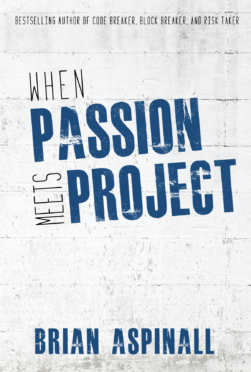Student A loves school. Student A thrives on the challenge of a test. Student A studies three nights ahead of every exam. Student A is driven by marks and grades. Student A is good at “playing school”. School comes quite naturally to student A. Student A wants to be told what to do to get the grade. Student A participates in every class discussion and is proud of accomplishments. Student A answers every homework question as soon as student A gets home from school.
Student A loves tests and exams.
Student A gets good grades and wants to be successful.
Student A is not a risk-taker because student A is mark driven.
Student A is not a critical-thinker because there is too much risk in not getting an “A”.
Student A won’t take a risk, it’s unsafe.
Student B is disengaged. Student B doesn’t care much for school. Student B has been told by the system that student B is dumb. Student B has never been taught how to take a test, yet said test determines student B’s profile. Student B doesn’t study much. Student B’s fixed mindset controls decisions around school activities. Student B doesn’t often complete homework. Student B wants to do homework, but quite often doesn’t know how. Incomplete homework ruins student B’s night. Student B can’t sleep because student B is afraid.
Student B is afraid of tests and exams.
Student B fears grades and marks but wants to be successful.
Student B is not a risk-taker because it’s unsafe.
Student B is not a critical thinker because student B thinks student A has all the answers.
Student B won’t take a risk, it’s unsafe.
Employers want risk takers. Employers want problem solvers. Employers want communicators. Employers want collaborators. Employers want people to learn from failures. Failure is an opportunity for growth and reflection. Employers want a growth mindset. Neither Student A nor student B fit this profile.
At school, failure is bad. Staying in at recess is scary. Repeating courses is scary. Telling mom “I failed” is scary. Failure is bad. Failure often leads to punishment. Bad bad bad.
This whole 21st century educational pedagogy thing – it’s not about just using technology. It’s not about just using iPads or twitter. It’s about embedding technology so deeply that student B has a chance. Technology is not an event. Technology is scaffolding.
21st century pedagogy is about equity. Fairness is not sameness. Fairness is not everybody gets the same, but everybody gets what they need.
We know we have to change. What will you do next?
 For all the kids who grow up in a small town and think they don’t stand a chance. You do. I was once that kid.
For all the kids who grow up in a small town and think they don’t stand a chance. You do. I was once that kid.
I see the faces of Student B as I read this post.
Perhaps Student B doesn’t complete homework because Student B has chores, responsibilities, and/or participates in extracurricular activities after school that offer learning with a focus not met during school hours.
Or perhaps Student B excels and shows leadership as he/she supports peers in activities not directly referred to in today’s curriculum such as coding,, but coding is yet not part of the test.
Perhaps the current system doesn’t acknowledge or value these activities, but one day, Student B’s employers will, because Student B is a risk taker, collaborator, and comes to the table exhibiting learning skills which trump report card marks.
Fixed vs. Growth Mindset – Report Card Marks vs. Learning Skills.
I know who I’d hire.
Typo in TweetThis: ‘Let’s shift school from “what did I get” to “what will I learn” #growthindset’ — should be #growthmindset.
Love the shift!
Good eye! Thanks, Paul!
#fixed.
Do we have any student “C”s? A student who is willing to take risks and learn from ‘mistakes’…a student who puts learning before grades…are we failing our kids if we have so few student “C”s?
How do we get Student B to attend school? If Student B attends, how do we spark engagement? They have to get a 50, in 30 credits to get a diploma. What if the school is so small that there’s not enough students to offer interesting courses, so sections get cancelled and Student B gets put into a class he doesn’t want, b/c that’s the only course that will fit. I think we need to overhaul the entire education system so that it’s competency-based. So that Students can pursue what they want to learn. BUT- we are confined by the MINofEd’s idea of what they MUST learn. How do we deal with this?